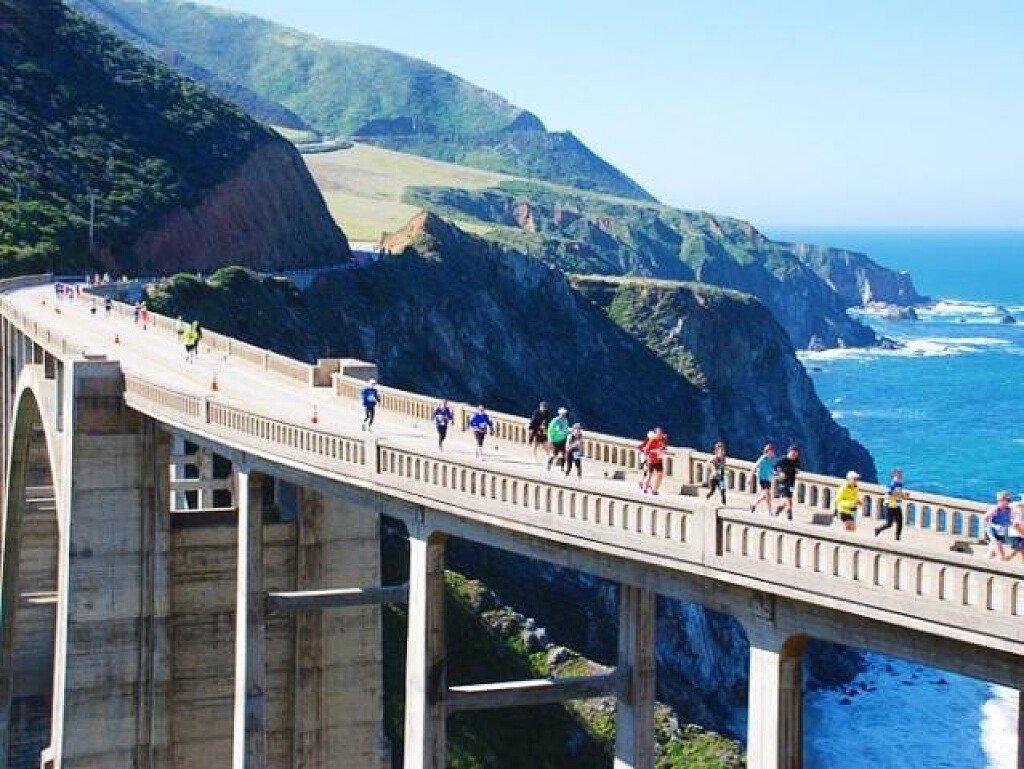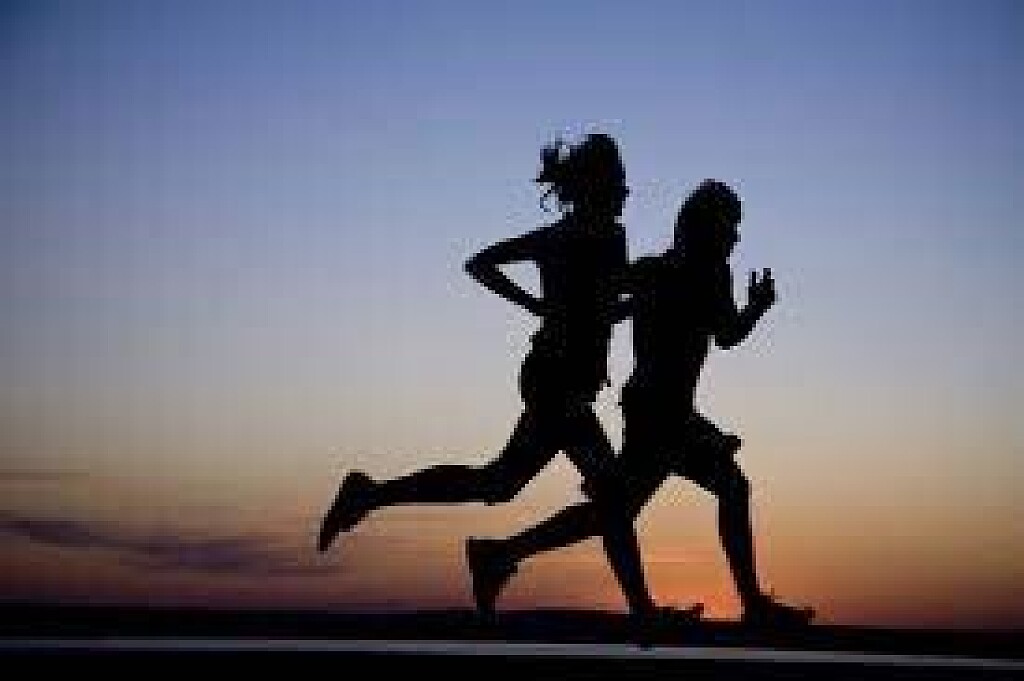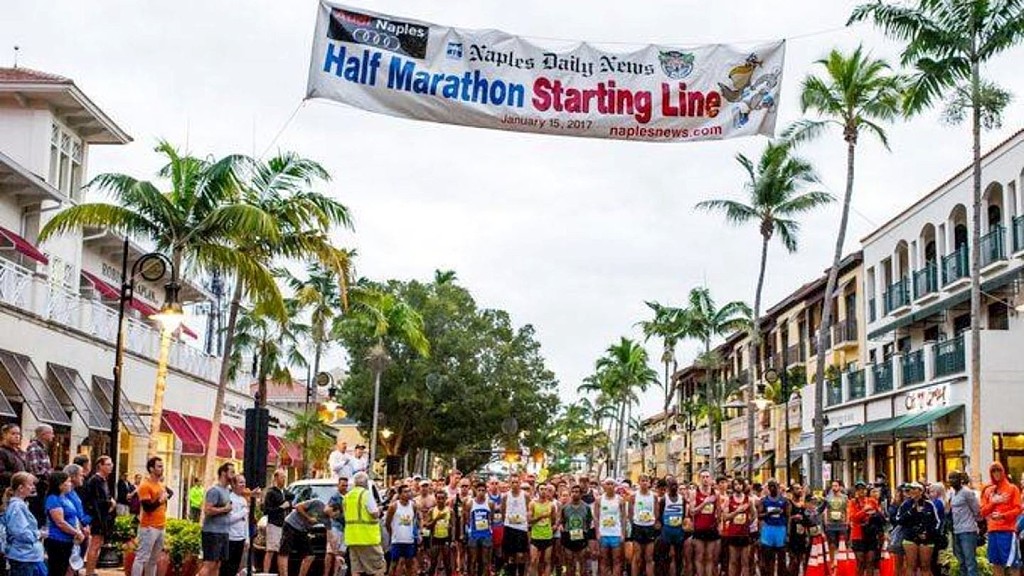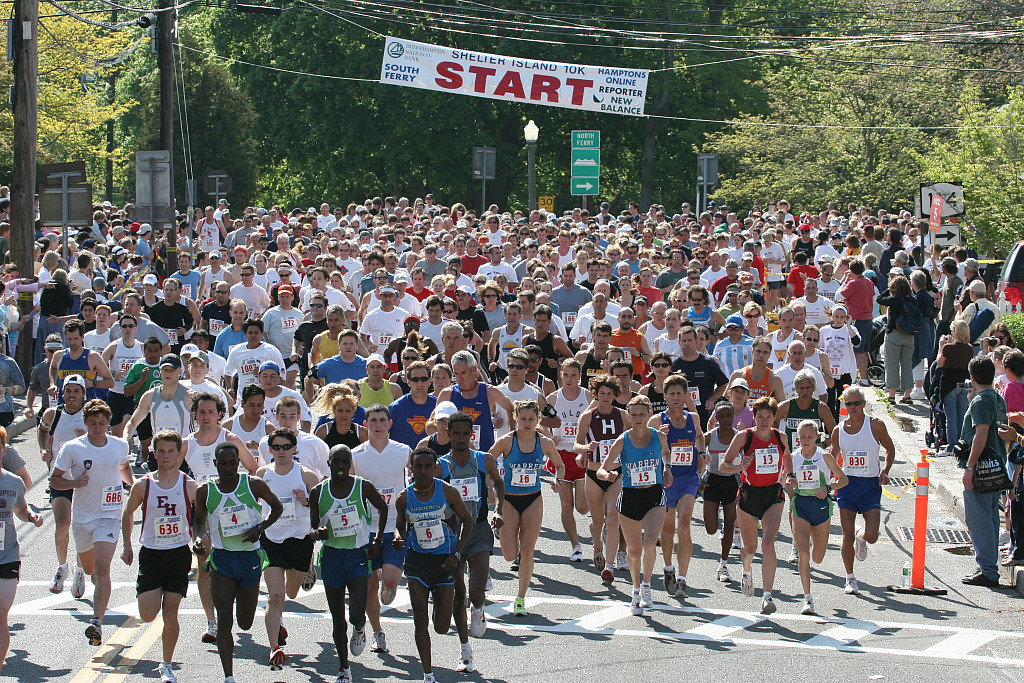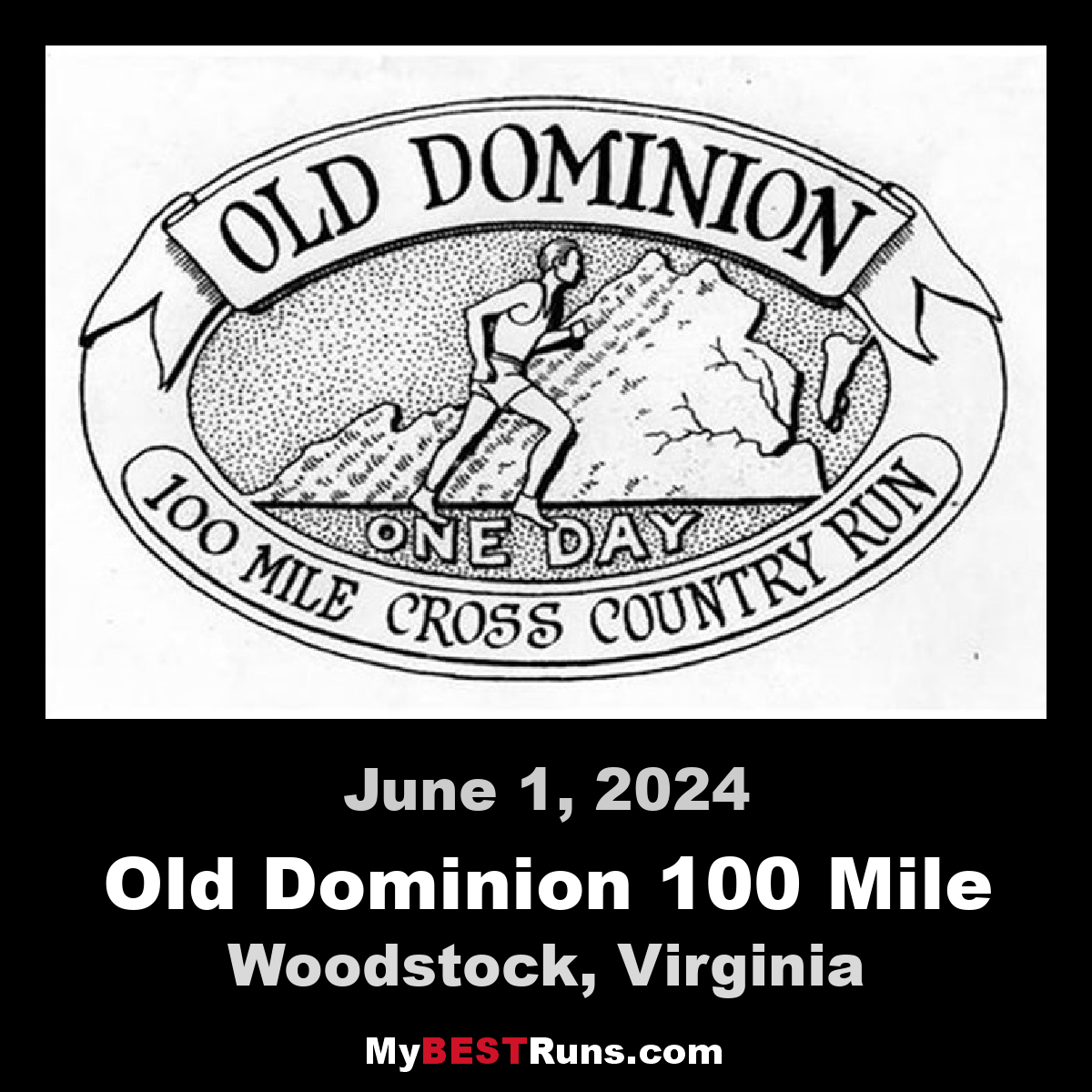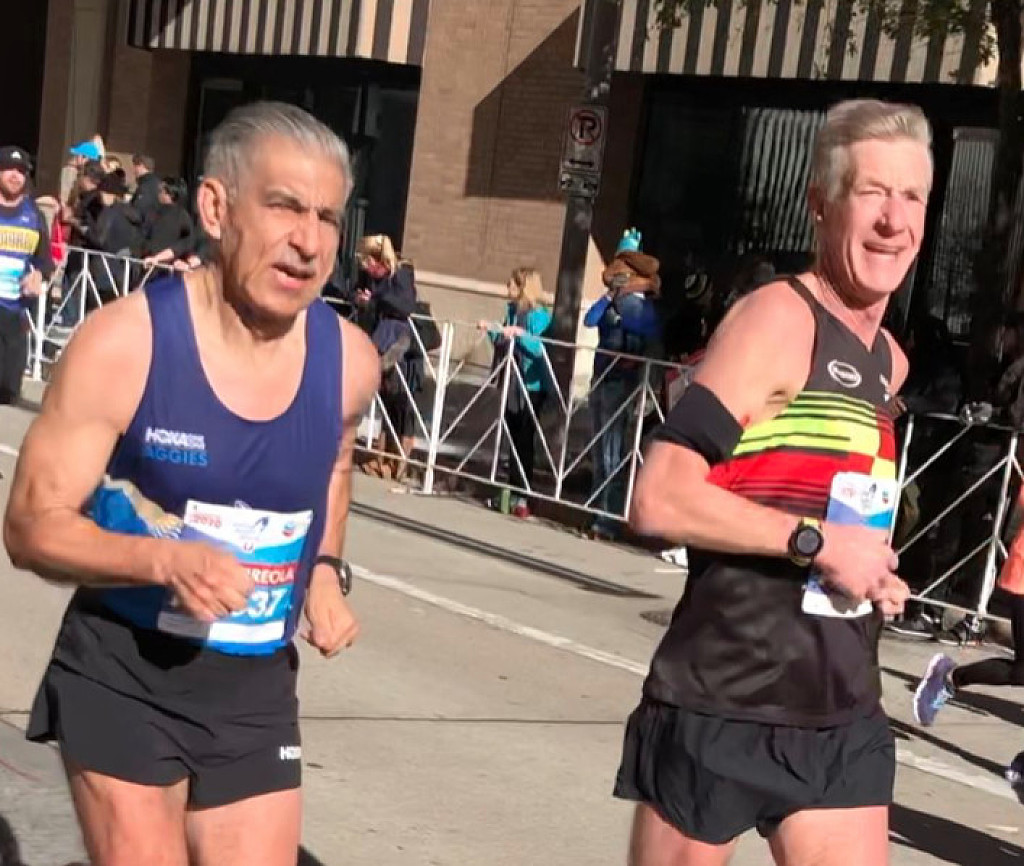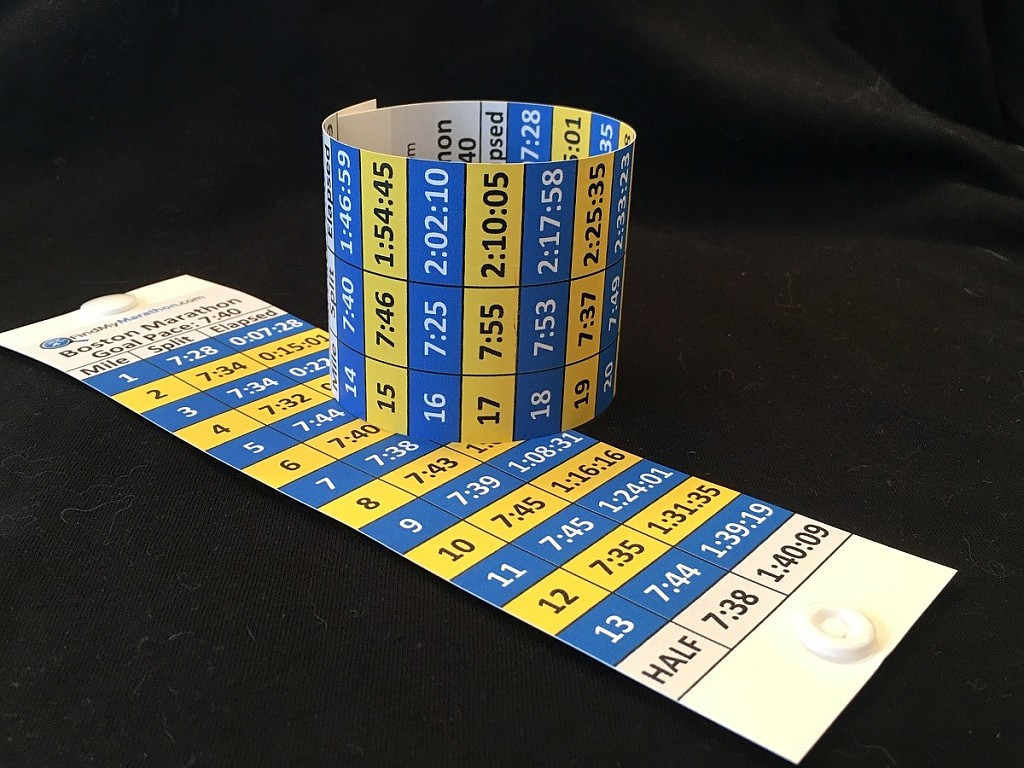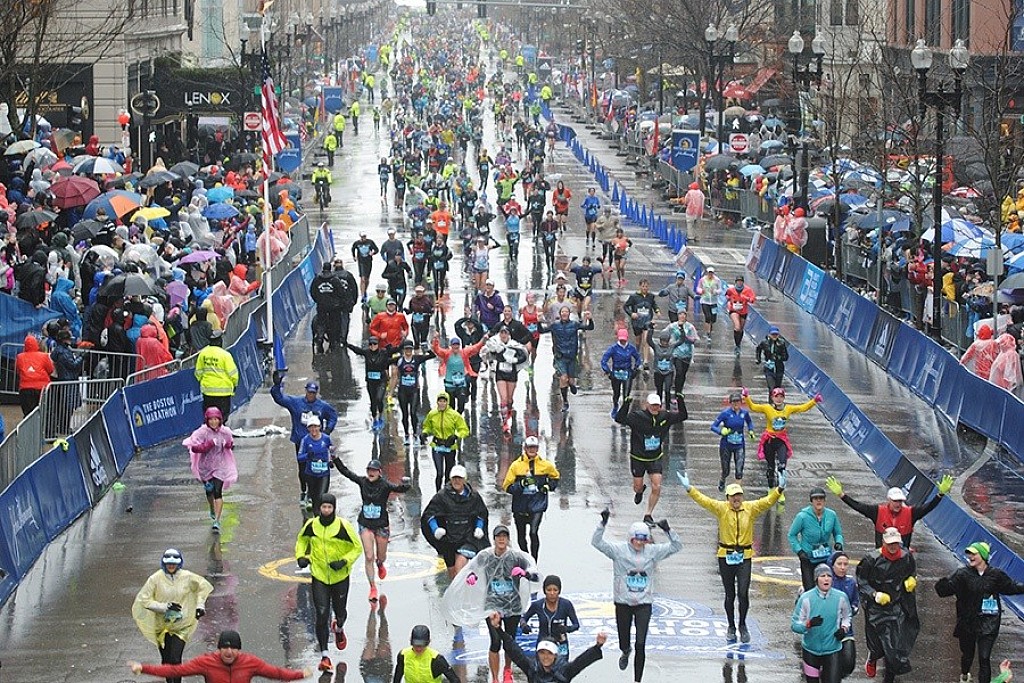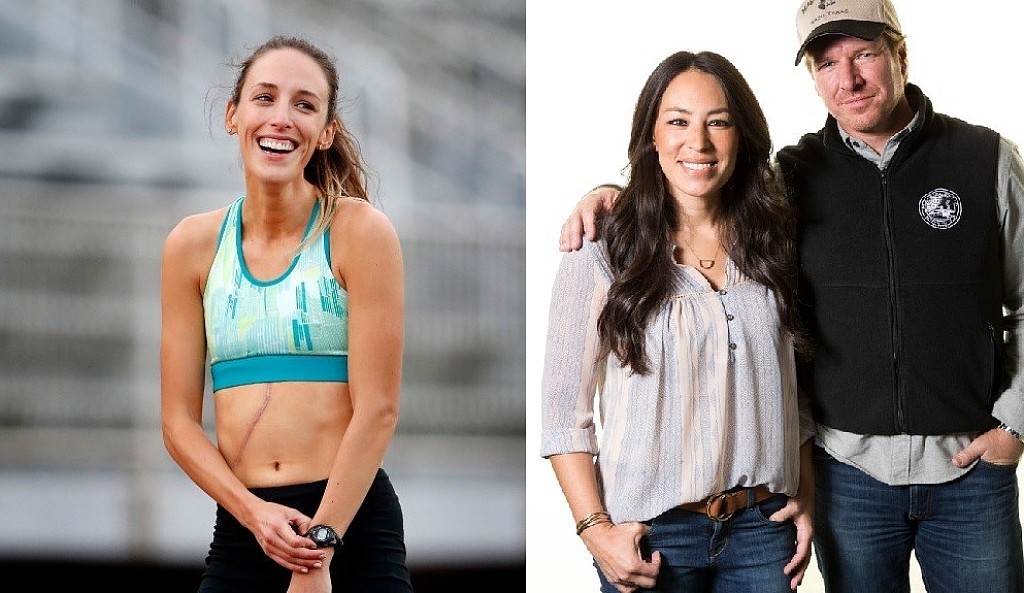Running News Daily
Running News Daily is edited by Bob Anderson. Send your news items to bob@mybestruns.com Advertising opportunities available. Train the Kenyan Way at KATA Kenya and Portugal owned and operated by Bob Anderson. Be sure to catch our movie A Long Run the movie KATA Running Camps and KATA Potato Farms - 31 now open in Kenya! https://kata.ke/
Index to Daily Posts · Sign Up For Updates · Run The World Feed
Articles tagged #chip time
Today's Running News
Setting running goals when you’re slowing down
Time waits for no one, as those of us who obsess over chip times know too well. Much of the thrill and focus of running boils down to besting ourselves, and that usually means covering the same courses and distances faster than we ever have before.
But there comes a time when we are no longer able to outrun ourselves. Age catches up, and at some point it becomes painfully clear that our fastest days are behind us.
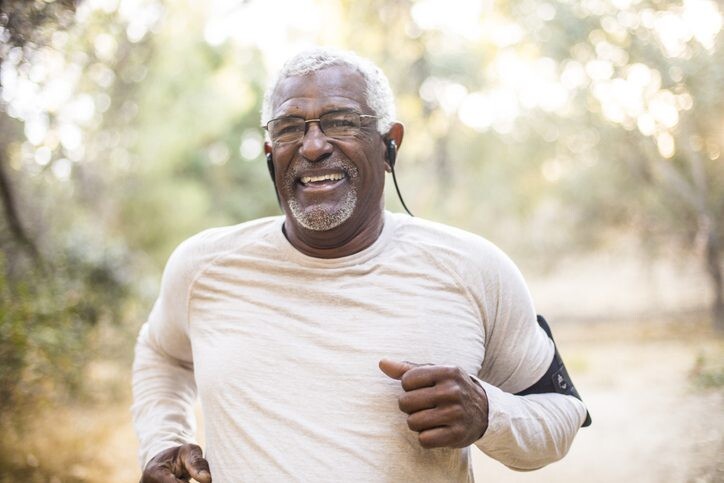
But slowing down doesn’t mean all our PBs are suddenly set in stone or that we’re unable to achieve new firsts as runners. As we mature as runners, so too can the nature of our goals. Stop the clock and consider these alternatives to time-centric goalsetting
Go the distance
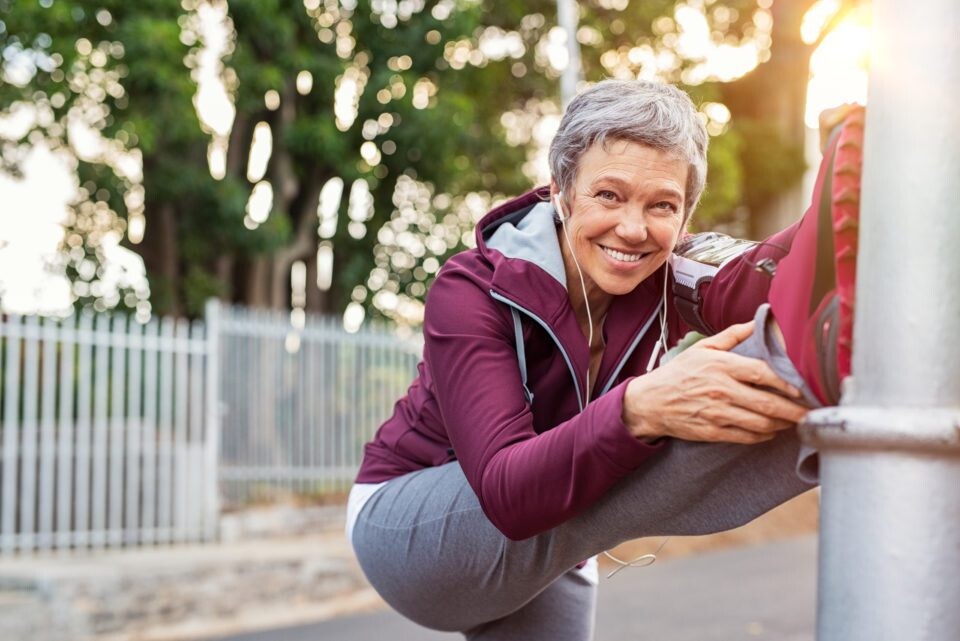
Running to set a personal best based on distance can add depth and variety to goalsetting. Going farther than you ever have is a challenge equally suited to longtime runners who have been building their fitness and endurance over years and decades, and fledgling runners who are taking up the activity later in life. The beauty of distance-based goalsetting is that it invites creativity. You might want to challenge yourself to finish your first ultra. Those more inclined to stick to shorter routes might find weekly, monthly or yearly distance goals a better fit. Runners in their retirement years who may now have more opportunities to travel can try smashing their record for most miles run outside Canada in a single year. Couples who have more time to connect can strive for new records for distances run together. Distance goals can be tailored to meet just about any runner’s strengths and schedule.
Get on a hot streak
Being consistent is both one of running’s greatest virtues and steepest challenges. Aiming to see a streak through to a new PB can really test your mettle, but it’s a goal that’s accessible to runners of all abilities. Streak-setting doesn’t exclude the super-speedy, like New Zealand’s Nick Willis, who last year marked his 20th straight year of running a sub-four-minute mile. That said, successful streaks can be a well-earned source of pride for runners who stick with running 1 km every day for a month, or 10 km every month of the year. Like distance-focused goals, streak targets are limited only by a runner’s imagination.
Consider non-performance goals
Slowing down offers us an opportunity to reflect on our relationship with running and to consider ways to make it deeper and more meaningful. An option worth considering is making the shift to a more supportive role. This might mean crewing a friend or family member’s attempt at an ultra-marathon, or dispensing water or medals as a volunteer at an upcoming half-marathon. Volunteering can also be a pathway to becoming a vital part of a world-famous race you always wanted to experience in-person but never got the chance to as a competitor.
by Paul Baswick
Login to leave a comment
Big Sur International Marathon makes its return Sunday
Three years is a long time to wait at the starting line. But the Big Sur International Marathon is raring to go.
Canceled in both 2020 and 2021 because of COVID-19 safety concerns, the world-renowned race returns this weekend, where a sold out slate of about 9,800 entrants will take part.
“It feels good to be back,” said Doug Thurston, race director and executive director of the Big Sur Marathon Foundation, which organizes both the Big Sur International Marathon and Monterey Bay Half-Marathon each year. “Runners have responded well, and we’re ready for a great race.”
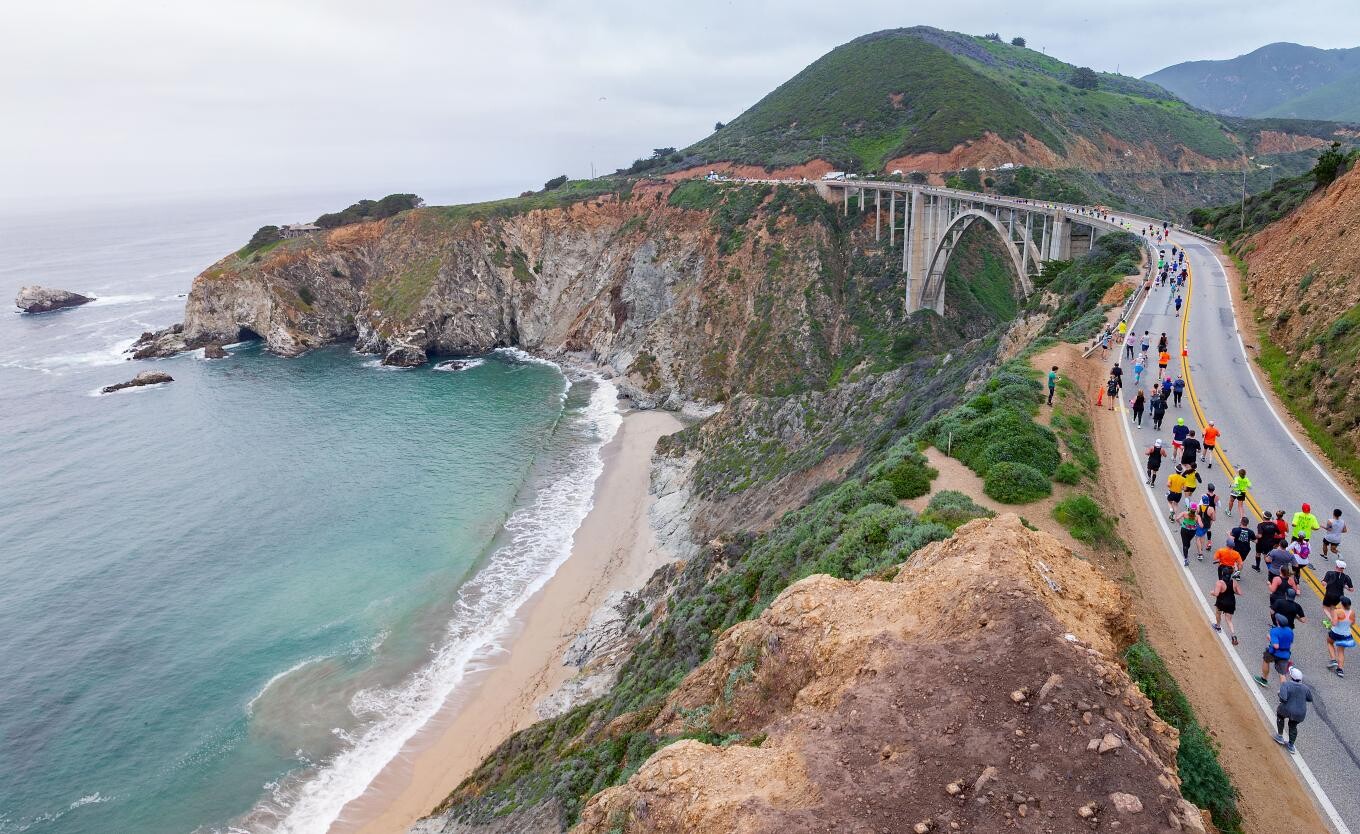
Speaking to an unabated enthusiasm for the event, Thurston explained that racing slots filled as quickly – if not quicker – than they “ever had before.” The Big Sur International Marathon has sold out in each of the past 10 years it has been held. To the excitement of Thurston, the Big Sur Marathon Foundation, and a more than 100-person organizing committee that manages the event year-round, 2022 proved to be no different.
“It’s a great testament to our volunteers and the community,” said Thurston. “The scenery can’t be beat, but good scenery doesn’t mean a great race. Great volunteers and community support for more than 30 years speaks volumes to how important the race is. (And) they’re anxious to provide a world-class experience to people this weekend.”
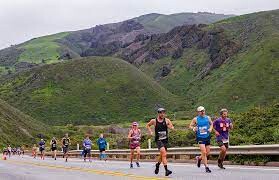
The much-anticipated affair will kick off early Sunday morning, with marathoners taking their mark at Big Sur Station at 6:35 a.m. Beyond the 26-mile, 365-yard scenic stretch along Highway 1, runners are set to take part in a host of other races happening alongside the big distance, including a 21-miler, 11-miler, 12K and 5K. All are set to commence before 8 a.m. Sunday.
Though years have passed since runners were last invited to skirt the Big Sur coastline, Thurston said the course itself is reminiscent of previous races, barring a few recent upgrades meant to render routes safer. Those include a freshly paved roadway and a revamped starting line process, Thurston said.
Yet, what may bring an added element of notoriety to this year’s slate of races – apart from the anticipation of their return – is an enhanced backdrop, Thurston continued, even if topping the peak of picturesque is hard to imagine.
“I think these mid-spring rains that we had last weekend and are anticipating over the next couple of days will make this one of the most green and most spectacular races for runners to enjoy,” he explained. “There’s going to be some special color along hills with wildflowers and things. … It’s going to be beautiful.”
Entrants set to relish in the panoramic trek include five-time Big Sur International Marathon men’s champion Adam Roach, defending 2019 men’s champion Jordan Tropf and elite runner Ben Bruce. Between the three, Thurston is anticipating an “interesting” race, particularly among Tropf and Bruce, who both just competed in the Boston Marathon Monday.
The Big Sur International Marathon includes a special category for those runners determined enough to take on both events: Boston 2 Big Sur. Attracting 400 of the world’s fittest athletes, the challenge combines Boston and Big Sur chip times and awards participants for their pace across the two marathons. This year, the races are less than six days apart. That’s more than 52 miles of running in the span of a week.
Besides those poised to push racing limits, Thurston said he’s particularly looking forward to a group of runners he dubs the “grizzled veterans,” who have participated in every Big Sur International Marathon since it started in 1986.
Still, Thurston said well over a majority – more than 80% – of entrants in the races each year are first and only timers to the event.
“For thousands and thousands of runners, this is their one opportunity to experience something like this,” he said.
That desire to check off the Big Sur International Marathon on a larger running bucket list, Thurston added, is a factor in why 30% of runners previously entered in the canceled 2020 event returned this year to finally satisfy their ambition. These already listed entrants had priority coming into the 2022 race. Thurston is glad to see some retain their racing plans two years later.
“People had invested time and energy in preparing for the race,” he said. “Nobody knew in the summer of 2019 when folks registered that there would be a pandemic in late winter of 2020. …But it was canceled five to six weeks before they could participate. Now they can look forward to doing it again.”
For non-runners looking to watch, the only spectating opportunity will be at the finish line at Rio Road in Carmel. There will be no points to watch at the start or along the course. Non-official bicycles are likewise not allowed Sunday. While the marathon goes on – which is bound to a six-hour course limit – Highway 1 will be closed to traffic. It will reopen at 1 p.m. Sunday.
While proof of vaccination or recent negative test will not be required to attend the event per current county guidelines, organizers are strongly encouraging all entrants and attendees to arrive fully vaccinated or be tested for COVID within 48 hours of their visit if unvaccinated. Thurston also noted that masks will be worn on buses carting runners to the starting line. Those taking part in Friday and Saturday’s pre-race Health and Fitness Expo at the Monterey Conference Center will also be asked to wear masks, Thurston said.
More information about this weekend’s Big Sur International Marathon can be found at https://www.bigsurmarathon.org/.
by Tess Kenny
Login to leave a comment
Big Sur Marathon
The Big Sur Marathon follows the most beautiful coastline in the world and, for runners, one of the most challenging. The athletes who participate may draw inspiration from the spectacular views, but it takes major discipline to conquer the hills of Highway One on the way to the finish line. Named "Best Marathon in North America" by The Ultimate Guide...
more...How should you feel at the end of a long run? If you are extorting all your energy into your long runs, you are doing it wrong
It’s easy to overdo every aspect of training by going too hard on a rest day or too fast on the first rep of your speed workout. The long run is a craft that shouldn’t be overdone, as it has a sweet spot in your training to improve aerobic endurance over a certain time or distance. If you are extorting all your energy into your long runs, you are doing it wrong.
Long runs are a crucial piece of the training block in your preparation for your goal race. They prepare your body to handle the physical demands of a race, building confidence and soothing your mind over that distance. Long runs are a fantastic way to measure your growth, as they remind us of the work that needs to be done before race day.

Depending on your training load, there are a few different ways to do your long run–you can treat it as a slow progression run, run long and slow, or run slowly with a fast finish. All these long-run approaches have different benefits depending on your purpose, but each should moderately have your body feeling the same way at the end.
The goal of your long run should be to cover the distance comfortably, hitting the training distances and getting to the start line or your training week healthy. Therefore, it’s important to feel comfortable yet fatigued at the end of a long run. The distance will be prolonged work, but that’s why it’s important to hit a slower pace through the first eight to 10K, which will accomplish more than going at a faster pace.
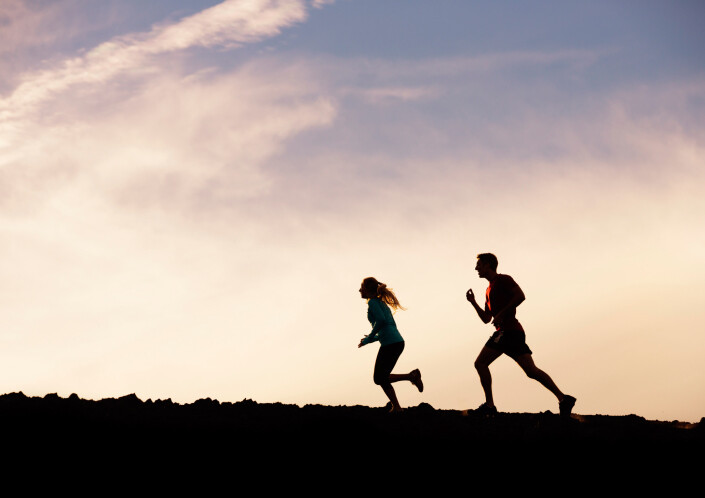
In the second edition of Jack Daniels Running Formula, he states, “The feeling you want to achieve on every long run is how you’d expect you’d feel in the latter stages of a half or full marathon.”
Long runs are meant to teach your body to physiologically prepare for the stresses it will experience on race day. Besides receiving a bib and chip time, there are very few things you do on race day that you have not yet practiced on a long run along the way.
by Marley Dickinson
Login to leave a comment
Naples Daily News Half Marathon is ready for Sunday with COVID-19 protocols in place
A couple thousand runners, shoulder to shoulder, eagerly waiting for the start.
That's been the scene at the start of every Naples Daily News Half Marathon until Sunday.
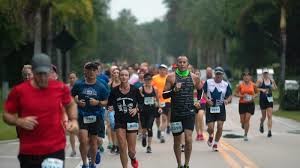
And Mitch Norgart is just fine with that. The president of Gulf Coast Runners, which runs the event, is simply happy there will be a 2021 NDN Half Marathon, no matter what it looks like.
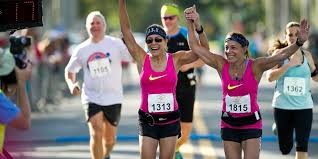
"We're just thankful," Norgart said, pointing as much to the important fundraising for the organization's youth development the Half Marathon creates as to the chance for runners to participate.
Like anyone trying to stage an event during the coronavirus pandemic, the half marathon has taken layers upon layers of planning to keep runners safe. In previous years, it was to keep them safe from things like traffic on the streets of Naples. Now it's entirely something different.
"We have three people that are 10 feet apart start every five seconds," Norgart said. "We can actually start 1,000 people in 15 minutes and keep all of these people at least six feet apart throughout the entire starting process. They have to keep a mask on up until they start the race.
"We hit them with hand sanitizer and a mask and a bottle of water once they cross the finish line. There are no tents, no massage therapy like in previous years or things like that. They get a bag with a banana, orange and a power bar. We ask them to leave the premises."
"We had to give the City of Naples a 10-bullet point outline of how we're going to conduct the races," Norgart said. "We got approval from city council based upon us meeting with Pete DiMaria, who's the fire chief. He's also in charge of emergency command.
"We met with them and the police department, the fire department, and city manager, deputy city manager, and community events."
That race with 150 runners went off well. Gulf Coast Runners hired a videographer who had a drone and a photographer to document the start of the race so they could research how it all went, and also share that with the city.
"We really wanted to prove, not just to ourselves, but to our members and most importantly our powers-that-be at the city, that we could safely stage a race," Norgart said.
For elite runners, there's a different mandate. They must have two negative tests within seven days of the race. And they will line up at 6:55 a.m., ahead of the usual 7 a.m. en masse start. The other reason for that is USATF goes by a gun time, not a chip time. Norgart is well aware of some of the financial situations of runners, so Gulf Coast Runners is offering to cover the cost of the second of the two COVID-19 tests.
"They have to provide us with the proof (of the negative tests)," Norgart said. "Each one of the tests have to be 48 hours apart."
Because runners are generally health-conscious, and Gulf Coast Runners has been very communicative regarding the procedures, Norgart isn't that concerned that protocols will not be followed. Nevertheless, race marshals, volunteers, and even some city police will be on hand to make sure they are. The city also has a mask mandate.
"They are dedicated athletes who, if they want to race a Gulf Coast Runners race ... they know what's expected of them and they risk being disqualified, and they know that," he said.
by Greg Hardwig
Login to leave a comment
Naples Half Marathon
Why run Naples? It's a flat, fast and shady loop. Spirits are always really high, in part from the carbed-up pasta feeds and also because of the really colorful Coolmax shirts! The finish line is where the party begins, with unique quality medals to all finishers who finish within the race time limit, door prizes including weekends at beach front...
more...What is going to happen to road racing as we know it? Bob Anderson thoughts on the situation. Could it be the end of big races?
The COVID-19 virus is deadly. Already (as of May 17) at least 317,000 people worldwide have died from the virus. This number is still growing by thousands each day. By the end of this week most likely over 100,000 people in the US will have died from the Coronvirus (COVID-19).
Some people think this number has been inflated. Others think it is low. It is hard to really know the true facts. In any case thousands of people have died from this new virus. That's a fact.
Some still feel this virus is no worse than the common flu. Many of these ill informed people might be some of the ones who are continuing to spread the Cornavirus. Many of these people don't wear face masks while in public nor practice social distancing. These types of people could easily be those that end up infecting others. And kill racing too. More on this later.
Doctors are saying this virus is much more contagious than the common flu and the death rate particularly for people aged 60 plus is high. Much higher than the common flu.
This information is talked about daily in the news and there is no need to further exam that here. The focus here is road racing and what impact this crisis is going to have on the sport.
The My Best Runs (MBR) website only features and follow the best, most interesting and unique races in the world. The site is currently following 837 races from all over the world.
One thing the website does is list the leaderboard results from the races featured. The top four men and women and then age-group winners in ten year age-groups starting at age 40 are posted. Stats are complied and compared among the races. Nearly 90,000 unique people visited the site in February to look for races, follow races or read Running News Daily. The traffic had doubled in a year. That's over one million annually. The growth of the site illustrates how road racing around the world was growing.
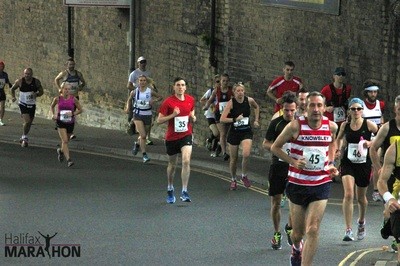
Everything was set for a banner year. The Boston Marathon had lined up another amazing field for their annual races that has been held every year since 1896 on Patriots Day. The London marathon had confirmed that the world's top two marathoners would battle it out on the streets of London. Maybe the first sub two hour marathon in a real race was going to happen? However both races were postponed and they hope to have races this fall. Some feel that is not going to happen.
It was in early February when people began talking about the Cornavirus. A virus started in China. But mostly people did not seem overly concerned.
The month before (January 26) the Ujena Fit Club (UFC) Training Camp in Thika Kenya was opened. The camp was not totally finished but the core group of runners had been selected, a time trial was staged and a traditional goat feed blessed the opening. A couple hundred people showed up for the affair.
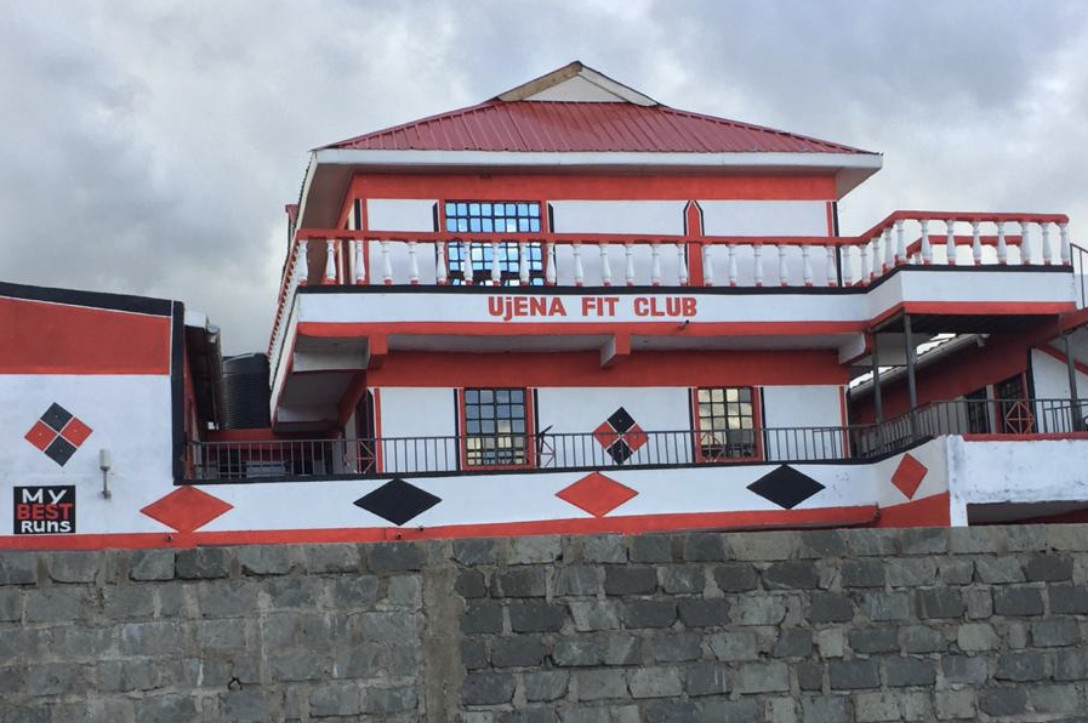
A third floor of the club would be added in the following months to house guests interested in training with elite Kenyan runners. The official grand opening was set for the end of May with a Double Road Race 15k race planned the same weekend. Sponsored were being lined up for a world record attempt.
The top runner in the club and part owner is Joel Maina Mwangi. For the last couple of years prior he would travel to Italy in the spring and bring back enough prize money to take care of him and his family for the rest of the year.
2020 was going to be his best year yet. Joel was in top form being trained at his UFC Training Camp by coach Dennis. His teammates pushed Joel in three-a-day workouts to higher limits.
Joel left for Italy in early February right after the UFC Training Camp US partners Bob and Catherine Anderson had left after attending the opening.
Joel's first race was in Verona, Italy Feb 16. He won that race and clocked 1:00:40 for the half marathon, a personal best. His plan was to race each weekend after that and then run the Rome Half Marathon set for March 8. This point to point course is fast. Galen Rupp had won there a couple of years back breaking an hour in the process. Joel's plan was to win, break an hour for the first time and bring home the big prize purse.
This didn't happen as Italy started closing down their country to battle COVID-19. It was going out of control. Joel luckily left Italy March 7th for his home in Thika, Kenya while he could still travel. But not with the over $20k(US) he was planning on bringing back home with him.
The world was shutting down. Whole countries were locking down. The last race featured by MBR to take place was the LA Marathon March 8 along with several others held that same weekend. There has not been a significant race held any place in the world since March 8. California ordered everyone to Shelter in Place starting March 17. Other states and countries followed.
Every race scheduled for April or May and featured on the MBR website were either canceled or postponed. Most races also in June and July have been canceled or postponed as well. The Tokyo Olympics were postponed for a year. The Berlin marathon in September was canceled (but they are trying to workout a new date), Western States 100, the Camrades Marathon, the Dipsea, and so many other well established races were cancelled.
Pippa Stevens a CNBC writer posted, "As running has grown in popularity, local clubs have popped up around the country, and there are now roughly 35,000 races each year in the U.S. alone, data from industry trade group Running USA shows.
"More than 44 million people in the U.S. identify as a runner, and 17.6 million people crossed the finish line in U.S. races in 2019.
"With all races cancelled for the time being, billions of dollars are at stake. The biggest marathons – from Boston to Chicago to London to Tokyo – inject hundreds of millions of dollars into local economies. The most recent analysis of the TCS New York City Marathon, for example, found that the race’s economic impact topped $400 million."
A lot is at stake. But race directors need to know that even if cities allow them to hold their races, not everyone will automatically be there on the starting line.
Dan Anderson wrote, "I am having a major motivational problem with my running! For the first time in my running career (almost 55 years) I have no races to train for. I really miss them. But I will not run in a race until a vaccine is available. Being 68 years old with several preexisting risk factors it is too dangerous! Hopefully within a year a vaccine will be available. Until then I will push myself to get out and run."
Racing is addictive and so many people around the world love it. Once things are figured out and it is safe again many will be there on the starting line.
Sam Tada who lives in Japan wrote, "Racing helped me so many times in my life and I miss it.
"Racing gives us opportunity of challenge, growth, and communication. It makes us happy and healthy mentally and physically. I love racing and miss it.
"We are facing difficult time right now but once this health concern is gone I think we will be able to enjoy racing more since we understand how racing is important for us.
"I am looking forward to racing again and I am trying to do my best effort to stop the spread of this virus."
There are a lot of things that will need to be addressed. Here are some ideas I have. Maybe at least for awhile or forever all runners will need to show up wearing a Face Mask.
Then they walk into a screening booth and have their temperature checked. If they pass, they walk into another booth were they are sprayed with a solution (totally safe) that would kill any viruses they may have on their clothing, shoes or body. At this point they are still wearing their face mask. And they continue to wear their face mask until about a quarter mile out or until there is spacing between them and others. Once they finish they put back on their Face Mask until they are back in their car.
Of course everyone would have to sign a Waiver saying that if they contract COVID-19 at the race and if they die later their family could not sue the race or city. No idea how porta potties, water stops or handing out medals at the end could work out other than eliminating them.
I see two problems with these ideas. Remember those people that are already not following the rules? Do you think they would show up at a race wearing a Face Mask? And we also know that signing a waiver does not restrict a family from sueing everyone if a member of their family dies from COVID-19 which they determined they got at a race. Even before this crisis a husband ran a half marathon in San Francisco and died at the finish line. He had signed a waiver but his wife sued everyone and won lots of money. The race Director got out of the business (sadly) yet he did nothing wrong from the inside information I know.
There is not a clear answer about the future of road racing. No matter how careful race directors, cities and charities (because they are big losers too) work together it would only take a few jerks to ruin it all.
So what race is going to be the first one back? Any day now the Old Dominion 100 Miler set for June 8th will be making a decision. They posted on their website, "The Old Dominion Run is still working all options in an attempt to have the run this year.
"We are working with numerous authorities in our area to assist in providing a good and safe race day experience for everyone involved. The governor of Virginia has gone to phase one in our area and our authorities are reviewing our plan vs the restrictions.
"Currently, part of our proposal has had to include a limit on our field to 50% for any hopes for us to proceed. We currently have 55 entrants and will not immediately be taking more from the wait list.
"Responses from the authorities will be a major part of our decision on 17 May. If the race proceeds, entries will not be more than 55. The waitlist will remain active," posted by Ray, Wynne and Race Management.
On June 20th the Shelter Island 10k (first photo) is scheduled to take place in Shelter Island New York. It is a big race and there are always fast winning times. We have contacted the race director and have not gotten a comment from them. There is no mention on their website about COVID-19. We are assuming they are trying to make it happen but what is their plan?
A couple of other races in late June are also trying to figure something out. Like the Halifax Marathon (second photo) has not torn in the towel just yet but are closely monitoring the situation as noted on their website.
Another one of the 837 races being followed by MBR wrote, "Our race was cancelled for this year, fingered crossed we will be back in 2021, april 17th.
"Our race of 2500 might look a bit different in 2021, 10 wave starts of 250 each? Each 10, 15 to 20 minutes apart? Lots of questions like what will aid stations look like and function? Maybe results may go to chip times, or no awards at all? Things will be different.
"The big question now is how we will all deal with the city, county and state mandates and permits. In the past, permits were a pretty easy process, no mass gatherings limitations.
"Locally I believe we will have some small events, mostly if not all on our trail system which limits events to 200 participants. A couple are still moving forward with fall dates, hopefully they will happen. Currently we have a limit for runs set by our city, set at 250 runners with wave starts, with really no other details. In the past road events have had much bigger fields. Going forward if the social distancing stays part of the rules it will be very hard to stage a very large running event.
"Events may look like some ultrarunning events, with very little or no finish line parties, just finish, quick drink and maybe food and head home.
"Runners and organizations will adapt to the rules and events will happen," wrote Brian at Race to Robie Creek.
Hopefully the game changer is going to be that a vaccine is created and COVID-19 is wiped off the face of the earth. Just as long as everyone gets vaccinated and don't continue to think that COVID-19 is no worse than the common flu. This could solve most everything as long as cities who issue permits think it is enough.
It sure would be nice to get back to things as they were. Or at least close to it. But many of us will continue to wash our hands more often, wear a face masks at times and not go out if they are not feeling well. Road racing is just too important to so many people.
by Bob Anderson
Login to leave a comment
Old Dominion 100 Mile
The Old Dominion 100 Mile Endurance Run is more than just a race. It is more than just four marathons run back to back. It is more than an event in the yearly schedule. It is the Old Dominion. What does that mean? The Old Dominion stands for tradition - the tradition of each individual against a difficult course, hot...
more...Antonio Arreola and Steve Schmidt became the first runners to break three hours in the marathon over six consecutive decades.
It was unday morning in Houston and Antonio Arreola and Steve Schmidt became the first runners to accumulate six decades of sub-3-hour marathons (6DS3). Both ran a sub-3 in the late 1970s and every decade since, adding the 2020s in Houston. They finished hand-in-hand, with arms raised, after running the last five miles together.
They finished in chip times of 2:58:07 for Schmidt, and 2:58:18 for Arreola, who started ahead of Schmidt in the start-corral throng.
Schmidt caught Arreola from behind at 21.5 miles, and encouraged him the rest of the way. “I had the strong sense that he was holding back to run with me,” said Arreola. “Steve was a godsend. He really pulled me along.”
Arreola and Schmidt proved several things about veteran runners. First, that they have high Marathon IQs: Both ran perfectly paced efforts. Second, that they have high Emotional IQs, able to handle pressure with aplomb.
Schmidt, 59, is a retired helicopter pilot from Orion Township, Michigan. He ran his first sub-3, 2:46:22, in 1979, and set his marathon PR, 2:37:03, in 1984.
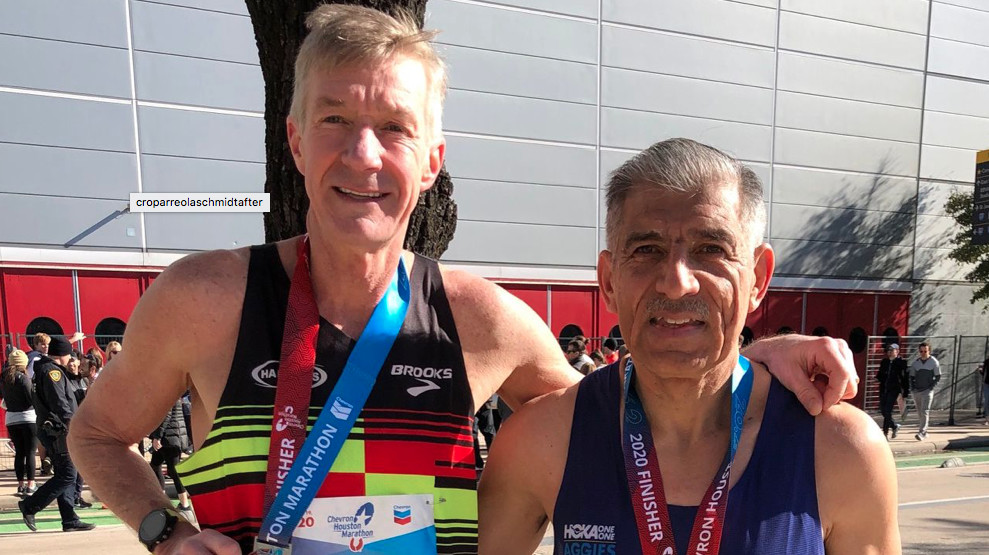
Arreola, 60, is a retired project manager from San Jose, California. He ran his first sub-3, 2:58:03, in 1976, and his marathon best, 2:46:17, in 2001.
Conditions for the Aramco Half Marathon and Chevron Houston Marathon were near perfect with temps in the high 40s most of the way. Runners felt a bit buffeted from the wind at times, but all the races produced excellent performances, particularly the half marathon where nine runners broke 60 minutes, and 14 Americans bettered 62 minutes.
Schmidt had been battling a cold 10 days before the marathon, and felt a bit rough the first 10 miles. “I had to tell myself, ‘Believe in the process. Trust your training. I knew I had put in the work.’” After the halfway mark, reached in 1:29:13, he kept feeling better and better. He was also wondering where Arreola was.
The two had met the previous day, and hoped to run together, but didn’t lay down a firm plan. During the first half, Schmidt scanned the field ahead, hoping to spot Arreola, but never could. They came together quite suddenly at 21.5.
“Tony, I’ve been looking all over for you,” Schmidt said to his new friend.
Arreola also said he felt bad in the early going, especially when he passed the first mile in 7:23. “That scared me,” he said. “It didn’t feel good the way it should have. I couldn’t figure it out.”
When the crowded streets thinned a little, he worked his pace down to 6:43, and passed the half marathon in 1:28:34. From 21 to 23, he suffered through several ups-and-downs at highway underpasses, but by then Schmidt had arrived to help. “I started lifting my knees a little more to relieve the quads, and that seemed to help,” Arreola said.
At the 25 mile mark, Schmidt looked over at Arreola, and said, “We got this.” They ran the last mile in 6:36, the fastest mile of the marathon for both. “I’m elated and a little relieved, Schmidt said after the race. “I put a fair amount of pressure on myself this last year. It’s been a focus. I wasn’t sure it would happen, but now it has. I don’t think it has sunk in yet.”
“Today was the highlight of my 48 years in running,” said Arreola. “I feel great. This was hard to plan for. I had some health issues. But it was a great experience to run another sub-3 today, and especially to meet and finish with Steve. He’s an outstanding guy.”
With his performance, Arreola leapt back to the top of the list for “longest span between sub-3s.” He had been supplanted in December by Iain Mickle. The current top three are:
Antonio Arreola, 43 years, 45 days: from Dec.5, 1976 to Jan. 19, 2019
Iain Mickle, 42 years, 151 days: from Jul. 10, 1977 to Dec. 8, 2019.
Blake Wood, 41y, 102 days: from Dec. 7, 1975 to Mar. 19, 2017
Another group of 6DS3 aspirants are planning to chase the goal next month in the Phoenix Marathon: Reno Stirrat, Jim Garcia, and Peter Lagoy. The Phoenix course has a net elevation drop of 900 feet, so it’s open season on razzing these guys about their race selection.
On the other hand, Stirrat is the Methuselah of the group at 65 years old, so maybe we should cut him a little slack.
by Podium Runner
Login to leave a comment
Congrats guys. This is an amazing feat. Next up is seven. Now that is really going to be tough as I know at age 72. - Bob Anderson 1/30 2:00 pm |
Chevron Houston Marathon
The Chevron Houston Marathon offers participants a unique running experience in America's fourth largest city. The fast, flat, scenic single-loop course has been ranked as the "fastest winter marathon" and "second fastest marathon overall" by Ultimate Guide To Marathons. Additionally, with more than 200,000 spectators annually, the Chevron Houston Marathon enjoys tremendous crowd support. Established in 1972, the Houston Marathon...
more...The B.A.A. has announced that registration for the 124th Boston Marathon will open September 9, 2019
The B.A.A. has announced that registration for the 124th Boston Marathon, to be held on Monday, April 20, 2020, will open September 9, 2019. It will follow the same process as in previous years, except that qualifying standards for 2020 have been tightened up by five minutes across all age categories.
Registration is entirely online, at www.baa.org. The B.A.A. follows a process of allowing the fastest qualifiers to register first, with a rolling admission schedule.
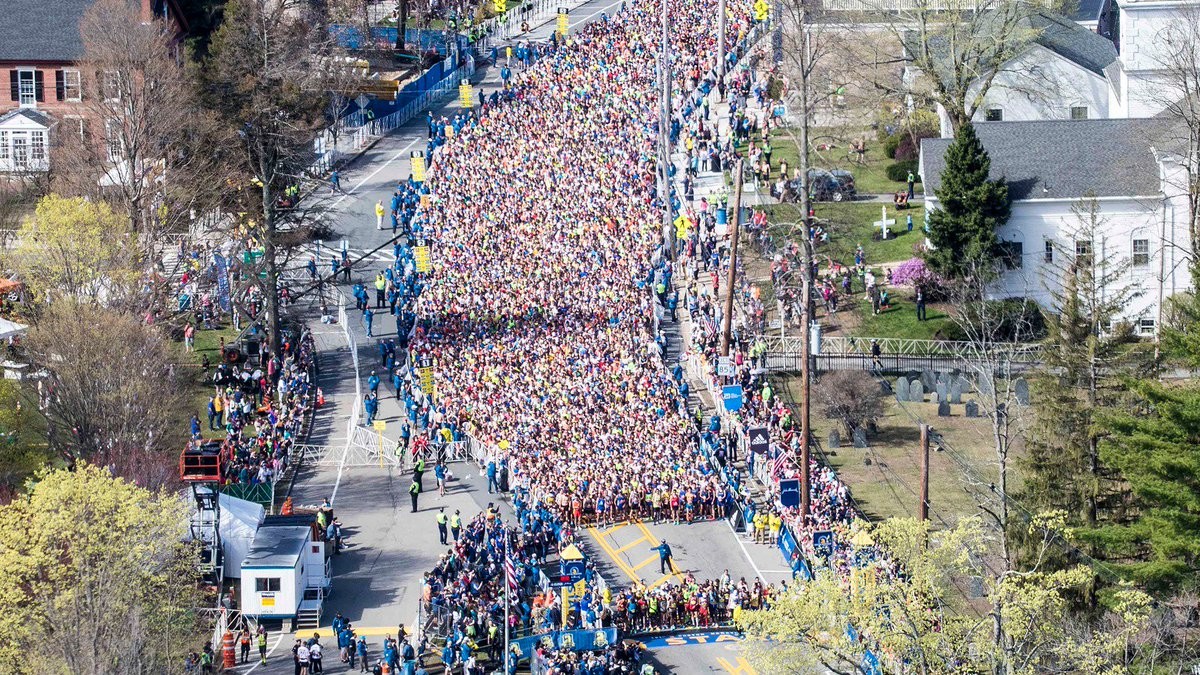
How it works:
On Monday, September 9 at 10:00 a.m. ET, eligible runners who have met the qualifying standard for their age and gender by 20 minutes or more may register.
On Wednesday, September 11 at 10:00 a.m. ET, registration will open for those who have met their qualifying standard by 10 minutes or more.
On Friday, September 13 at 10:00 a.m. ET, registration will open for those who have met their qualifying standard by five minutes or more.
Registration will close for week one on Saturday, September 14 at 5:00 p.m. ET.
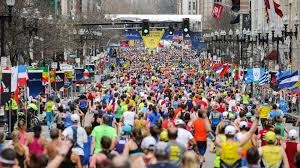
If space remains after the first week registration will re-open for all qualifiers from Monday, September 16 at 10:00 a.m. ET through Wednesday, September 18 at 5:00 p.m. ET.
As during the first week of registration, the fastest qualifiers by gender and age group will be granted entry as space allows.
If space remains after the first two weeks of registration:
On Monday, September 23 at 10:00 a.m. ET, registration will re-open to anyone who meets the qualifying standards.
Registration will remain open for valid qualifiers on a first-come, first-served basis until the maximum field size is reached, or until Sunday, October 27 at 5:00 p.m. ET (whichever comes first).
The qualifying window for 2020 began on September 15, 2018, and you may run a qualifying race anytime until the race is full or by Sunday, October 27, 2019, whichever comes first.
Qualifying standards for 2020 (all qualifying times are based on chip time):
Age Group Men & Women, 18-34 (3hrs, 3hrs 30min), 35-39 (3hrs 05min, 3hrs 35min), 40-44 (3hrs 10min, 3hrs 40min), 45-49 (3hrs 20min, 3hrs 50min), 50-54 (3hrs 25min, 3hrs 55min), 55-59 (3hrs 35min, 4hrs 05min), 60-64 (3hrs 50min, 4hrs 20min), 65-69 (4hrs 05min, 4hrs 35min), 70-74 (4hrs 20min, 4hrs 50min), 75-79 (4hrs 35min, 5hrs 05min), 80 and over (4hrs 50min, 5hrs 20min).
by
Login to leave a comment
Boston Marathon
Among the nation’s oldest athletic clubs, the B.A.A. was established in 1887, and, in 1896, more than half of the U.S. Olympic Team at the first modern games was composed of B.A.A. club members. The Olympic Games provided the inspiration for the first Boston Marathon, which culminated the B.A.A. Games on April 19, 1897. John J. McDermott emerged from a...
more...Prize Money in major races like the Boston Marathon should be awarded based on Gun Time
The weather at this year's Boston Marathon was horrible. Many elite runners and others just could not handle these conditions and did not finish. For the first time I can remember, several female runners that started in wave one placed.
With all the pressure of the media, the B.A.A. is going to hand out cash awards based on chip timing. This year's race should be looked at as unique and I do endorse the B.A.A. decision.
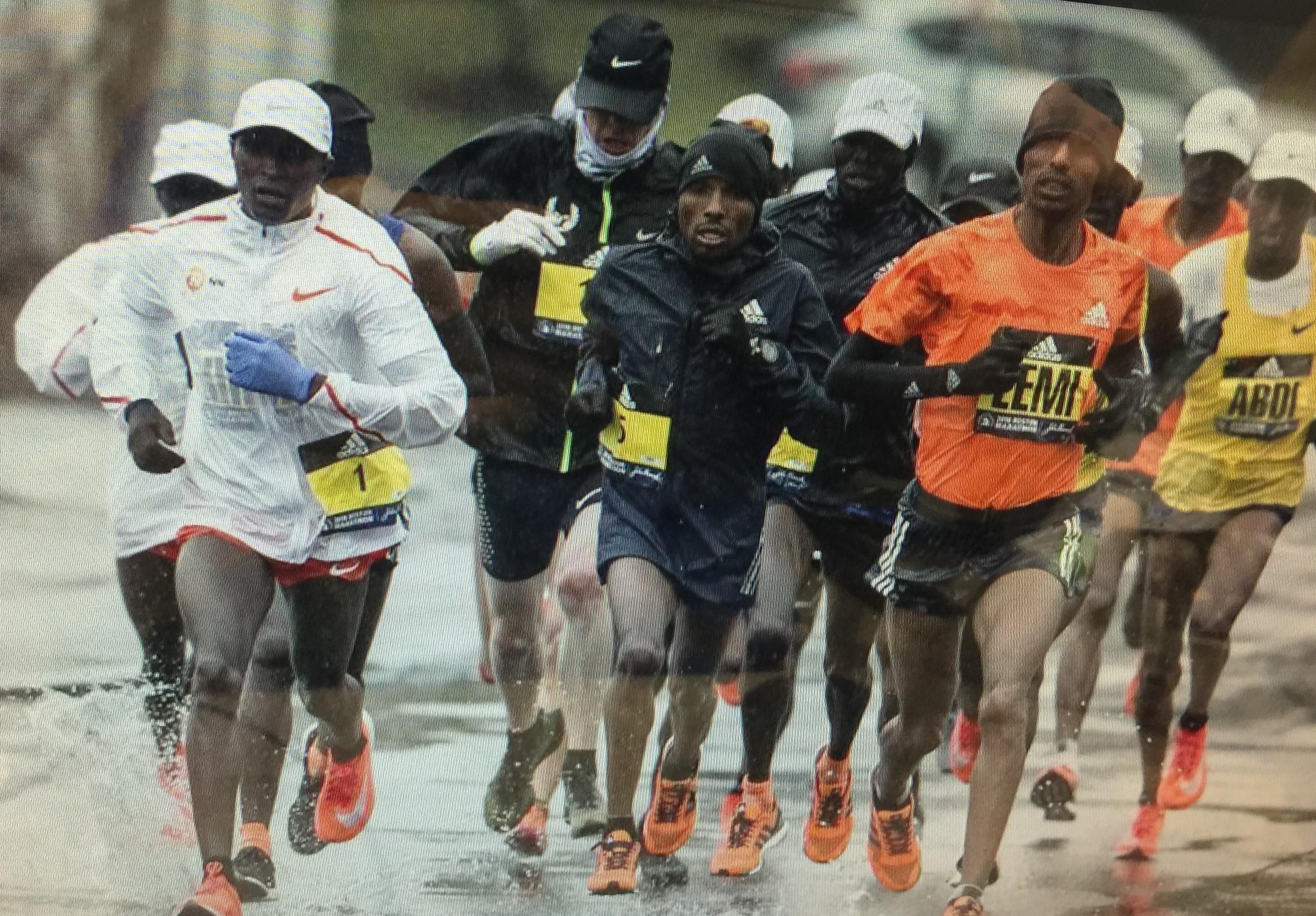
But to change things in the future would not be a good idea. Chip timing works for age-group but most major road races use gun time to award prize money.
In fact, gun time is the only time accepted by both USA Track & Field and the International Association of Athletics Federation.
David Monti, publisher of Race Results Weekly, wrote Sports Day, "To score an elite race based on chip times is both rare and risky. It's risky, because it is possible for an athlete to purposely start well behind the elites, say five minutes, then compete for prize money clandestinely and out of view.
“It's very possible that the first man or woman to break the tape will not actually be the race winner if the race is scored on chip time. How would that look?"
We also know that there are people who cheat. It is much easier to keep track of the smaller elite fields than a field of thousands. I think we do need to stick with gun time in the future for the overall top open places.
by Bob Anderson
Login to leave a comment
Co-Stars of Fixer Upper Chip and Joanna Gaines Silo District Marathon in Waco is set for Sunday
Co-Stars of Fixer Upper, Chip Gaines and his wife, Joanna, met Gabrielle Grunewald last fall in Central Park. Gabe is a professional mid-distance runner who’s been fighting a rare cancer since 2009.
She convinced Gaines that he could train for a marathon in about six months. Grunewald also shared how she's battled adenoid cystic carcinoma since 2009. Gabe’s story left such a mark on Chip that he quickly moved past his goal of running a marathon to actually hosting one in Waco as well.
He and the Magnolia team created Sunday's event the Silo District Marathon to benefit Grunewald's Brave Like Gabe Foundation, which raises funds for research on rare cancers.
"I didn't want to spend another second standing on the sidelines," Gaines wrote in a Jan. 10 blog post announcing the event. "Given what she's gone through, I didn't have any excuse not to give this a shot."
He invited his social media followers to join him. 100% of the profits from the race will be donated to the Brave Like Gabe Foundation in order to further the much-needed research on rare cancers.
It is our honor to come alongside Gabe and others with similar diagnoses to find answers, solutions and, ultimately, cures. Also thinking of the runners as well, the race will present $88,000 in prize money to the top three overall men and women in the half and the full.
The overall marathon winners will receive $15,000 and the half champions will earn $10,000. The prize money is going to be given out based on chip time and not gun time. Hopefully the best time will be the first person to cross the finish line too.
Login to leave a comment





